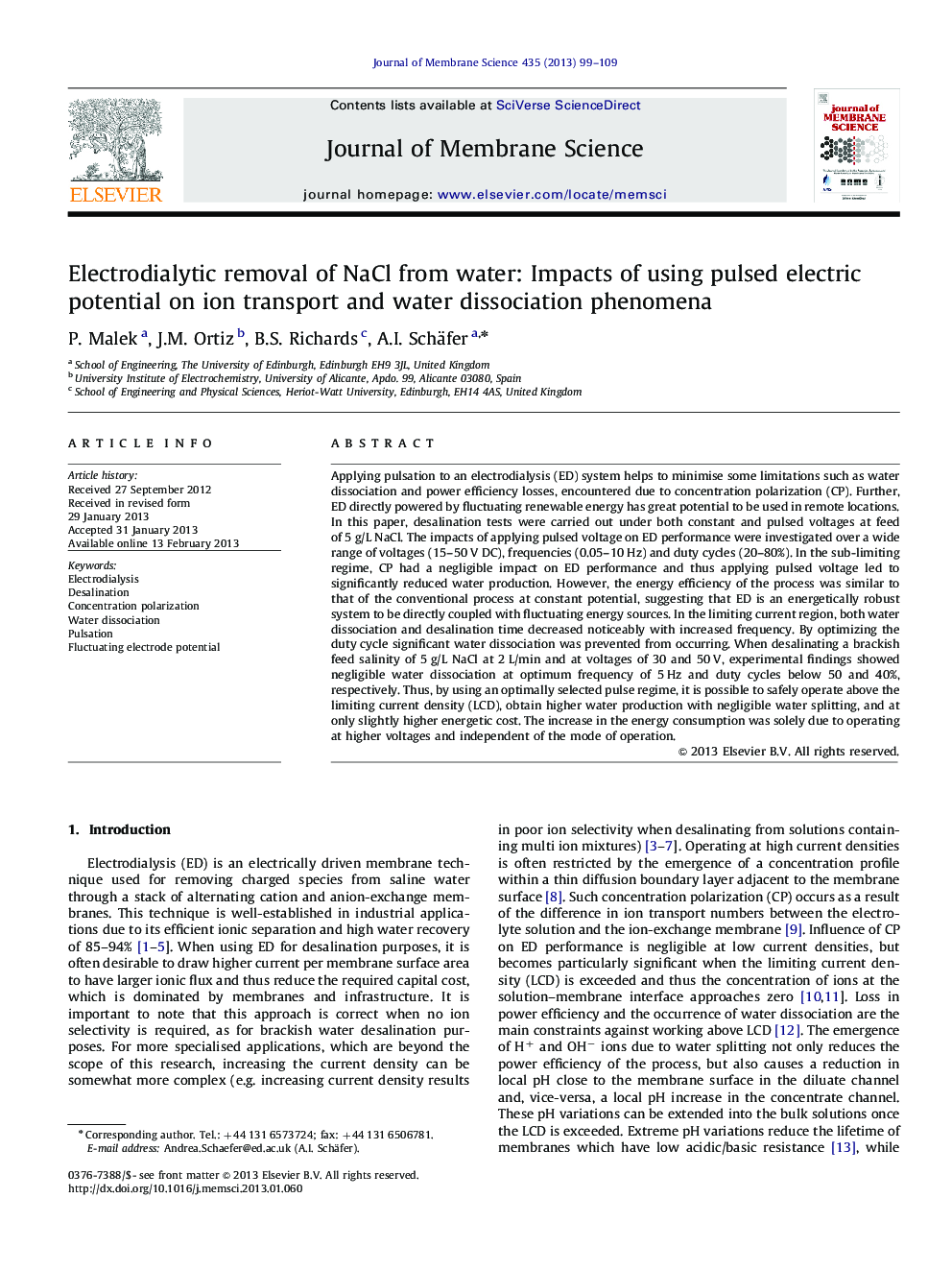| کد مقاله | کد نشریه | سال انتشار | مقاله انگلیسی | نسخه تمام متن |
|---|---|---|---|---|
| 634452 | 1456064 | 2013 | 11 صفحه PDF | دانلود رایگان |

Applying pulsation to an electrodialysis (ED) system helps to minimise some limitations such as water dissociation and power efficiency losses, encountered due to concentration polarization (CP). Further, ED directly powered by fluctuating renewable energy has great potential to be used in remote locations. In this paper, desalination tests were carried out under both constant and pulsed voltages at feed of 5 g/L NaCl. The impacts of applying pulsed voltage on ED performance were investigated over a wide range of voltages (15–50 V DC), frequencies (0.05–10 Hz) and duty cycles (20–80%). In the sub-limiting regime, CP had a negligible impact on ED performance and thus applying pulsed voltage led to significantly reduced water production. However, the energy efficiency of the process was similar to that of the conventional process at constant potential, suggesting that ED is an energetically robust system to be directly coupled with fluctuating energy sources. In the limiting current region, both water dissociation and desalination time decreased noticeably with increased frequency. By optimizing the duty cycle significant water dissociation was prevented from occurring. When desalinating a brackish feed salinity of 5 g/L NaCl at 2 L/min and at voltages of 30 and 50 V, experimental findings showed negligible water dissociation at optimum frequency of 5 Hz and duty cycles below 50 and 40%, respectively. Thus, by using an optimally selected pulse regime, it is possible to safely operate above the limiting current density (LCD), obtain higher water production with negligible water splitting, and at only slightly higher energetic cost. The increase in the energy consumption was solely due to operating at higher voltages and independent of the mode of operation.
Figure optionsDownload high-quality image (239 K)Download as PowerPoint slideHighlights
► Pulsation to an ED system minimises limitations of water dissociation and power efficiency losses.
► Using an optimally selected pulse regime allows to safely operate above the limiting current density.
► An application is the operational enhancement of directly coupled renewable energy ED.
Journal: Journal of Membrane Science - Volume 435, 15 May 2013, Pages 99–109